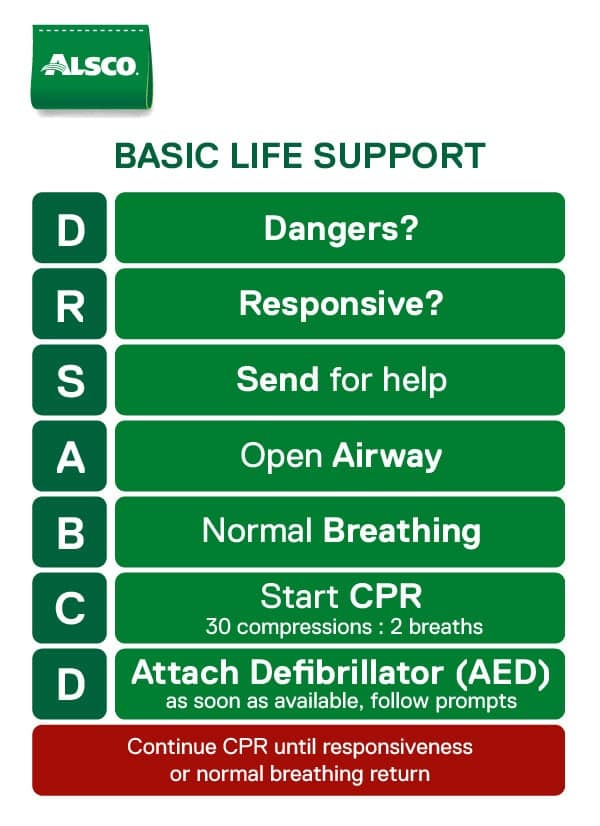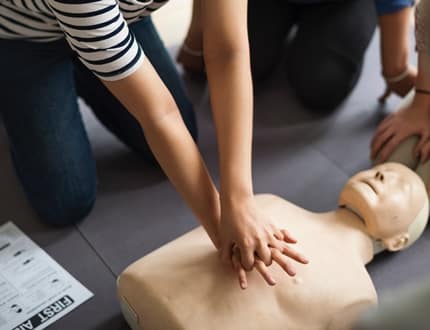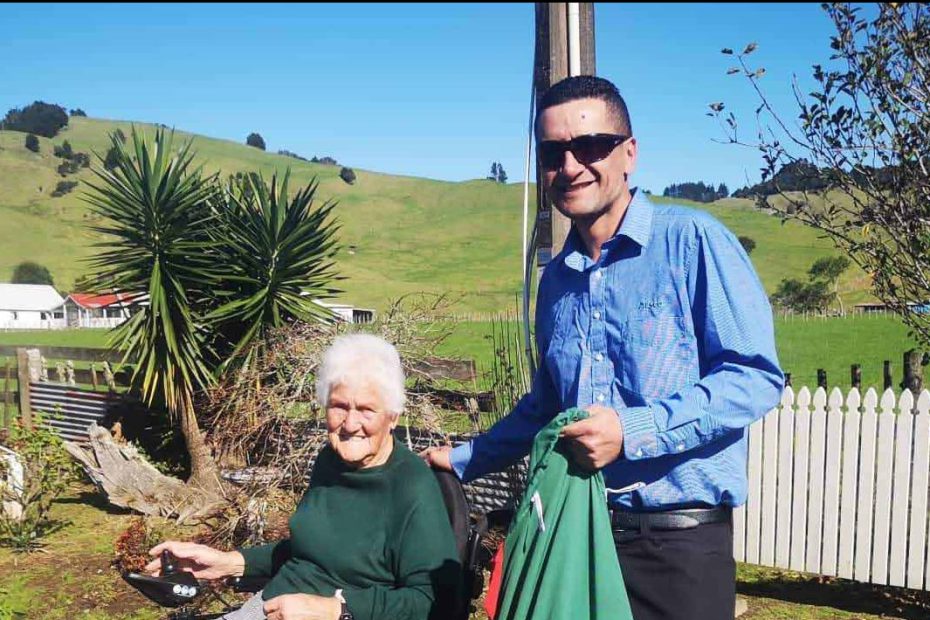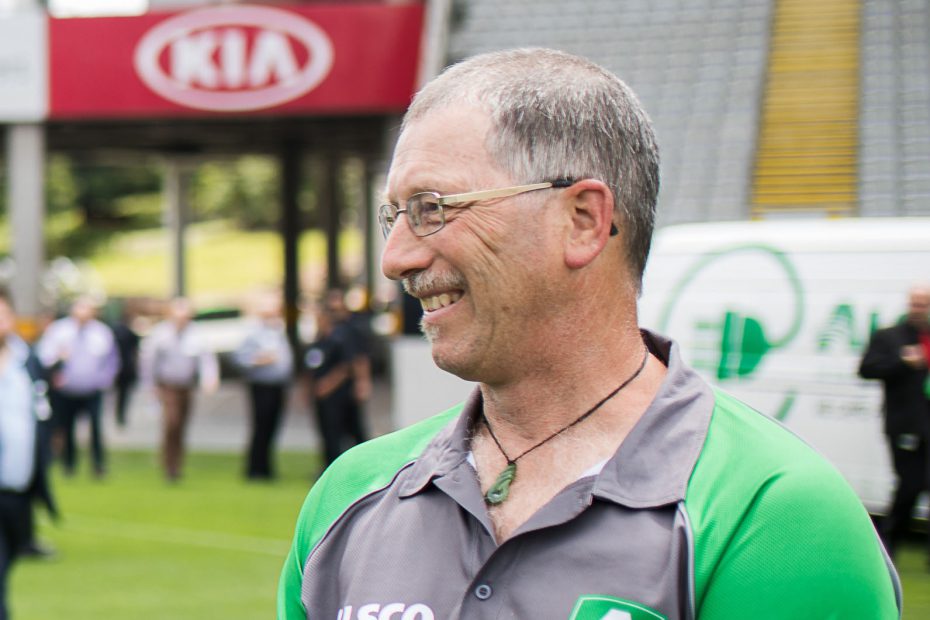The basic first aid involves helping patients in the case of emergencies. This should be conducted in a way that is safe for the person providing the first aid, the patient and the bystanders.
The basic first aid includes:
- Dealing with cuts, bruises, scrapes, eye and head injuries, fractures
- Dealing with potentially life-threatening conditions
- Managing patients that are unconscious until the ambulance arrives
In the New Zealand workplaces, this means that there is usually at least one trained and certified first aider and one or more first aid kits. Some workplaces also opt for additional first aid equipment, such as AEDs, eyewash stations, trolleys, beds and similar items.
Alsco NZ should be your go-to place for all your first aid kit requirements. Our first aid kits are rental which means you don’t have to purchase them. They will be stocked and restocked regularly by our professionals. Meaning – no maintenance for you. It is all included in the price. Get your first aid kits today.
What Is First Aid and Why Is It Important?
First aid is every quick assistance that is provided for a person who has suffered an injury or some sort of illness. It is important for the following reasons:
- It can prevent minor injuries and illnesses from escalating
- It can help save lives
- It can buy the time for the patient until they get proper medical care
- It can reduce the inconvenient injuries that prevent people from performing their work duties
That is why it is important that workplaces have somebody who is trained in first aid. This person is the one who should manage the consequences of an emergency situation and provide enough time for the ambulance to arrive.
What Is the Procedure for First Aid?
Generally, all certified first aiders know about the course of action they should take to administer the first aid. However, for those that don’t have the refresher courses every two years, the abbreviation DRSABCD is usually useful.

Here is the meaning behind this abbreviation:
- Danger – it should be eliminated prior to administering first aid. This doesn’t just include the patient. You should make sure that you are free from danger, as well as the other people present.
- Response – Establish if the person is conscious and responsive. This is extremely important as it can determine your next actions. Check responsiveness by talking to them, touching them or lightly shaking them. Never shake a child or an infant but rather pinch them lightly.
- Send for help – call 111. Give the operator all the answers in a precise and concise manner.
- Airway – it is important to check the person’s airways. If they are responsive and their airways are clear, learn how you can help them with their sustained injuries.If they are not responsive, you will need to open their mouth and look inside. Do that by tilting their head back and lifting their chin. You will need to unblock the airways if you can see the blockage in there. Turn the patient on their side before clearing the contents.
- Breathing – There are several ways in which you can check for the patient’s breathing:
- Looking at their chest for movement
- Placing ear next to their nose and mouth
- Placing hand on their lower chest to check for movement.
Unconscious patients who have detectable breathing should be turned on their side in a way that ensures that their neck and back are aligned.
- CPR (cardiopulmonary resuscitation) – CPR is started if the person is not conscious and they are not breathing. You need to start giving CPR as soon as possible and keep doing it until the person either restores their own breathing or the ambulance arrives. CPR works best in combination with AED in case the patient has suffered the cardiac arrest.
For proper CPR, the patient needs to be flat on their back, once you have them in this position, take the following steps:
- Place the base of your hand to the centre of their chest and grab your wrist with the other or place it over the hand pressing the chest.
- Press down so that you reach the 1/3 of their chest depth. Do it 30 times.
- Give them a breath of air by tilting their head back, closing their nostrils and slowly blowing into their mouth.
- Administer 30 compressions and 2 breaths interchangeably at a rate of 5 times within 2 minutes.
- Defibrillator – Automatic External Defibrillator or AED is an electronic device that, when placed on the patient’s chest analyses its heartbeat. If the heartbeat is irregular, it administers an electric shock and resets the heart. Anybody can use an AED since it comes with simple audio and written instructions. It is usually automatic which means you just need to attach it and leave it to do its job.
What Is the Legal Requirement for First Aid at Work?
The law offers the following guidelines when it comes to workplace requirements. The entirety of the responsibilities for the workplace first aid is on the PCBU – the employer:
Duty to provide first aid
(1) A PCBU must ensure that—
(a) adequate first aid equipment is provided for the workplace; and
(b) each worker at the workplace has access to the equipment; and
(c) workers have access to facilities for the administration of first aid.(2) A PCBU must ensure that—
(a) an adequate number of workers are trained to administer first aid at the workplace; or
(b) workers have access to an adequate number of other persons who have been trained to administer first aid.(3) In complying with subclauses (1) and (2), the PCBU must have regard to all relevant matters, including—
(a) the nature of the work being carried out at the workplace:
(b) the nature of the hazards at the workplace:
(c) the size and location of the workplace:
(d) the number and composition of the workforce at the workplace.(4) A PCBU who contravenes this regulation commits an offence and is liable on conviction,—
(a) for an individual, to a fine not exceeding $10,000:
(b) for any other person, to a fine not exceeding $50,000.New Zealand Parliamentary Counsel Office
First Aid for Workplaces – A Good Practice Guide from the Department of Labour translates this into a first aid kit on every 50 employees and/or a first aid kit on each floor or separate facility of the workplace. Company vehicles should also be equipped with first aid kits.
Is your workplace one of the most responsible ones – a school?
If yes, besides the basic first aid, you should also be familiar with the legal requirements for school washrooms. Read this School Washroom Guide and find out whether your workplace meets the necessary New Zealand school washroom standards.
Contact Alsco New Zealand to help you with ensuring your workplace has the appropriate and well-positioned first aid kits. We will rent as many kits as you need, stock them, restock them and check them for you. It is all included in a rental price. Get first aid kits for your workplace today.



